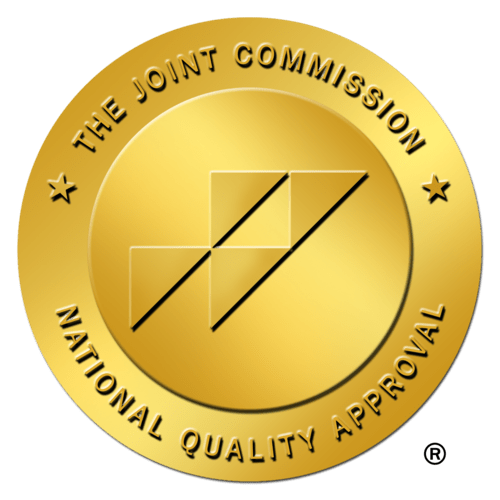
Healthcare facilities across the nation are facing a large problem: not enough workers to meet the high demand of healthcare. This intense pressure undermines the ability to deliver high-quality healthcare seamlessly.
To address this, facilities are racing to innovate.
They are exploring fresh approaches, reimagining how tasks are done, embracing technology, and investing heavily in training their staff. All these efforts aim to optimize the resources available and elevate the overall care provided to patients, but what is the ultimate answer? In this blog, we’ll explore ways facilities can begin to evolve to meet the new realities of the healthcare workforce.
Understanding the root causes of staffing shortages
There are numerous factors contributing to the current staffing crisis, two of which we will explore deeper:
Demographic shifts and an aging workforce
The healthcare industry confronts significant demographic shifts, including an aging population and an aging healthcare workforce. As healthcare professionals approach retirement age, there's a pronounced gap between the number of retiring workers and new entrants. This imbalance results in a reduction of available skilled staff, increasing the staffing crisis.
Burnout and attrition
Burnout remains a pervasive issue within the healthcare sector. Long hours, high-stress environments, and emotional tolls associated with patient care contribute to burnout among healthcare professionals. The resulting attrition due to burnout significantly diminishes the available workforce, amplifying the impact of staffing shortages on patient care.
The impact of staffing shortages on patient care
Compromised quality and safety
Staffing shortages directly affect the quality and safety of patient care. Overworked and understaffed healthcare professionals are more prone to fatigue, leading to potential medical errors, compromised safety protocols, and suboptimal patient outcomes.
Increased wait times and reduced accessibility
Shortages in healthcare staffing inevitably lead to increased wait times for patients seeking care. Limited availability of healthcare professionals translates into delayed appointments, longer emergency room waits, and reduced accessibility to timely medical attention, directly impacting patient satisfaction and well-being.
Strategies for elevating patient care amidst staffing shortages
1. Leveraging technological advancements
Healthcare facilities are integrating advanced technologies, telemedicine, and AI-driven systems to streamline processes. This automation optimizes workflows, empowering staff to focus more on direct patient interactions.
2. Empowering through education and training
Continual investment in staff training and education enhances skill sets and adaptability. Cross-training employees to manage diverse roles bolsters flexibility during shortages, ensuring uninterrupted patient care.
3. Adopting collaborative care models
Interdisciplinary collaboration among healthcare professionals fosters comprehensive patient care. By harnessing the expertise of various specialists, facilities can deliver holistic care, compensating for staffing deficits.
4. Prioritizing staff well-being and retention
Acknowledging burnout's toll on healthcare workers, facilities emphasize staff well-being initiatives. Implementing flexible scheduling, mental health support, and wellness programs fosters a positive work environment, aiding in staff retention.
5. Optimizing resource allocation
Data-driven approaches help forecast patient influx, enabling better staffing allocation. Proactive planning ensures consistent and effective patient care delivery, even with limited staff.
Additional strategies to consider
Community partnerships and collaborations
Establishing partnerships with community organizations and neighboring health systems facilitates resource sharing during staffing shortages. Collaborative efforts allow for the pooling of resources, staff, and expertise, ensuring uninterrupted patient care services across the region.
Patient-centric care models
Shifting focus towards patient-centered care models that prioritize preventive care and patient education helps mitigate the impact of staffing shortages. By empowering patients to take a proactive role in their healthcare, facilities can alleviate some of the strain on the workforce while maintaining quality care standards.
Advocacy for workforce development
Advocacy for increased funding and support for healthcare workforce development programs is essential. This involves lobbying for expanded educational opportunities, incentives for healthcare professionals, and policies aimed at attracting and retaining talent within the healthcare sector.
Leverage CareRev's flexible workforce platform
On-demand staffing accessibility
CareRev's flexible workforce platform offers acute care facilities immediate access to a pool of qualified healthcare professionals. Through a user-friendly interface, facilities can efficiently request and secure temporary staff to address immediate staffing needs, ensuring continuity in patient care.
Whether it's a sudden surge in patient admissions, unexpected staff absences, or seasonal fluctuations, CareRev provides flexibility in acquiring the right expertise for the right duration.
Quality assurance and credentialing
CareRev employs rigorous vetting processes, ensuring that healthcare professionals listed on the platform meet stringent quality standards and possess the necessary credentials. This assures healthcare facilities of accessing competent and qualified staff, maintaining care quality standards even during temporary staffing adjustments.
Cost-efficient and budget-friendly
Utilizing a per diem staffing platform presents a cost-effective alternative for facilities facing staffing shortages. Rather than committing to long-term contracts or full-time positions, facilities can optimize staffing costs by engaging temporary staff only when needed, aligning staffing expenses with patient demand.
Seamless integration and support
The seamless integration of these platforms into facility operations ensures a smooth and hassle-free experience. Support teams offer assistance throughout the staffing process, addressing any concerns or issues promptly, further aiding in the smooth functioning of healthcare services.
Enhanced staffing flexibility
By leveraging CareRev's flexible workforce platform, healthcare facilities gain increased flexibility in staffing management. They can efficiently scale staffing levels up or down in response to evolving patient volumes, minimizing disruptions in patient care while optimizing resource utilization.
Evolving and upholding patient care amidst challenges
In the face of the ongoing workforce crisis, healthcare facilities must urgently recognize and adapt to the new reality shaping the industry. The traditional approaches that once sufficed are proving inadequate in the current environment, necessitating a paradigm shift. Embracing technology is paramount, as it not only enhances efficiency but also addresses staffing challenges.
Moreover, healthcare facilities need to explore staffing models that allow for more flexibility in staffing up and down with demand. By fostering a culture of adaptability and embracing these transformative strategies, healthcare facilities can better navigate the evolving landscape, ensuring the provision of high-quality care despite workforce constraints.
CareRev is the flexible workforce platform purpose-built for acute care. Our technology reduces fixed costs, increases nurse engagement, and makes having a flexible workforce easy.





